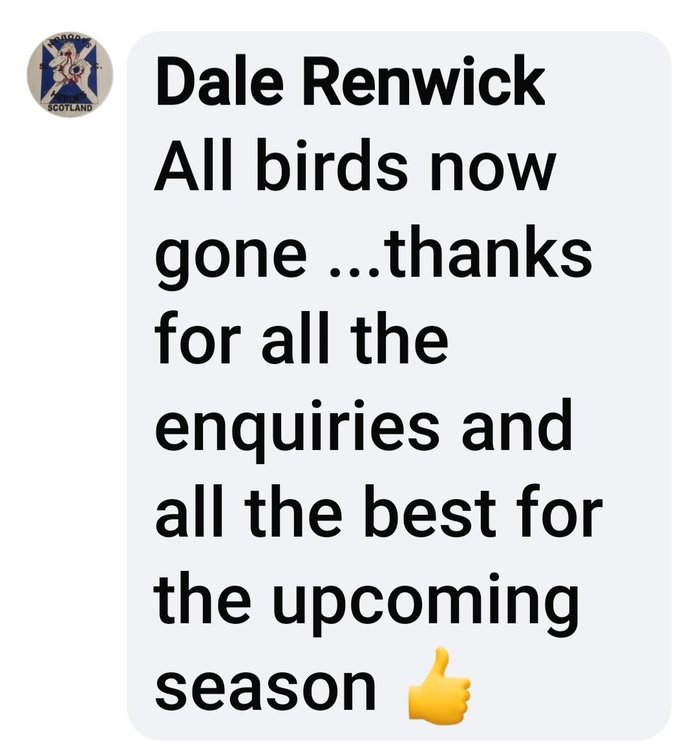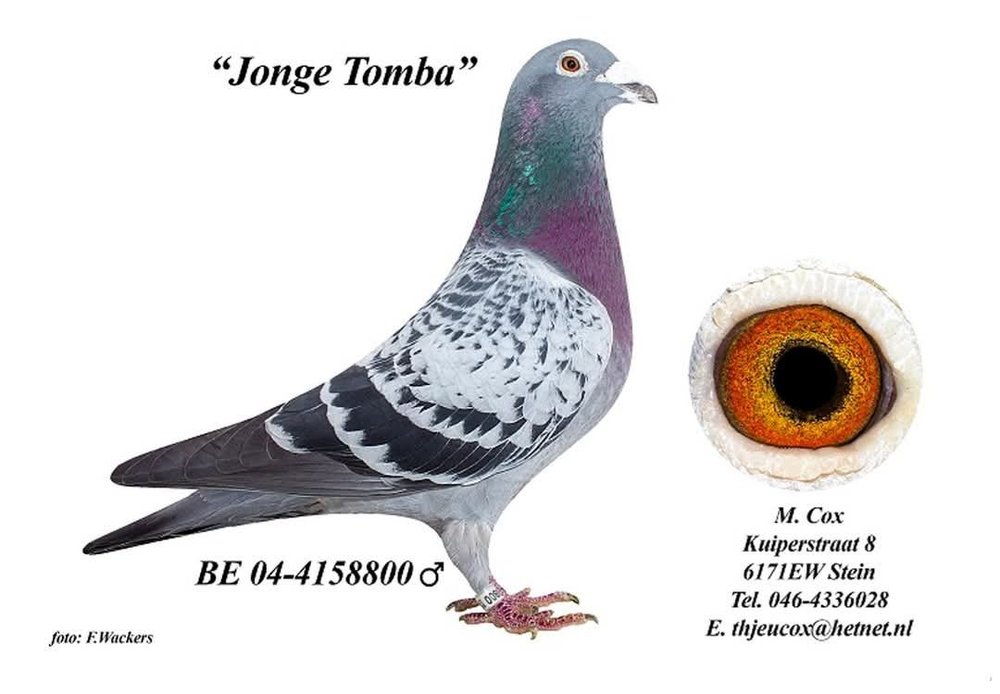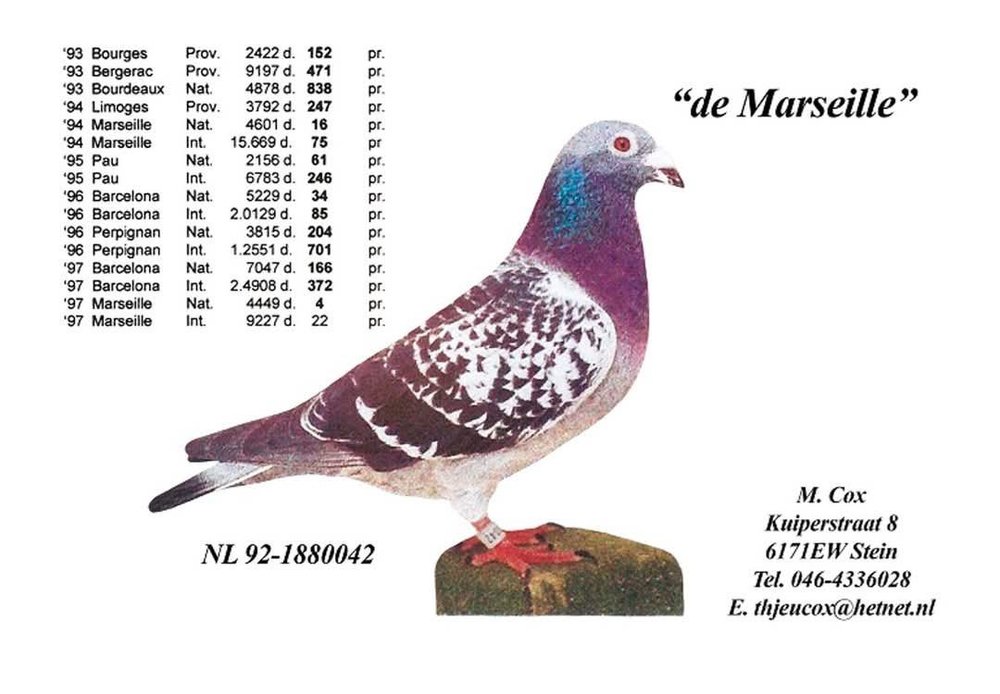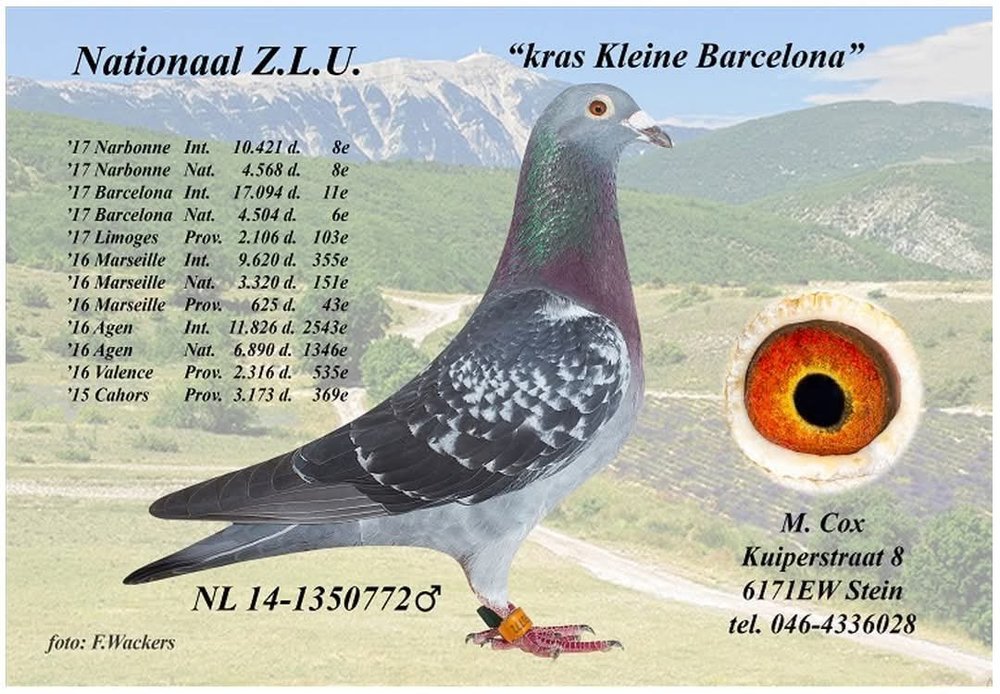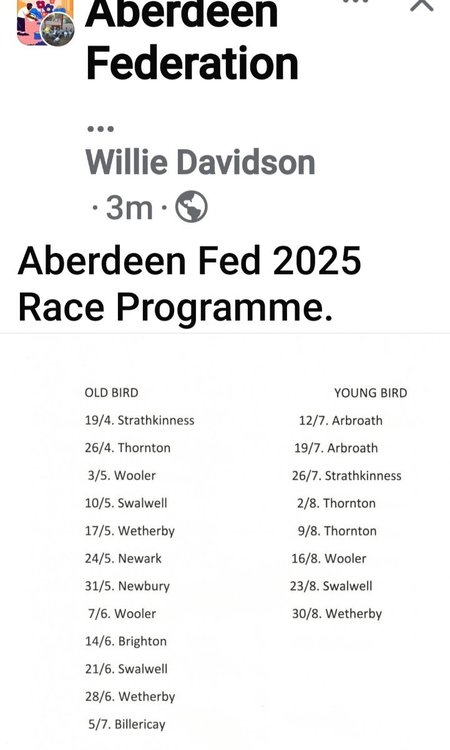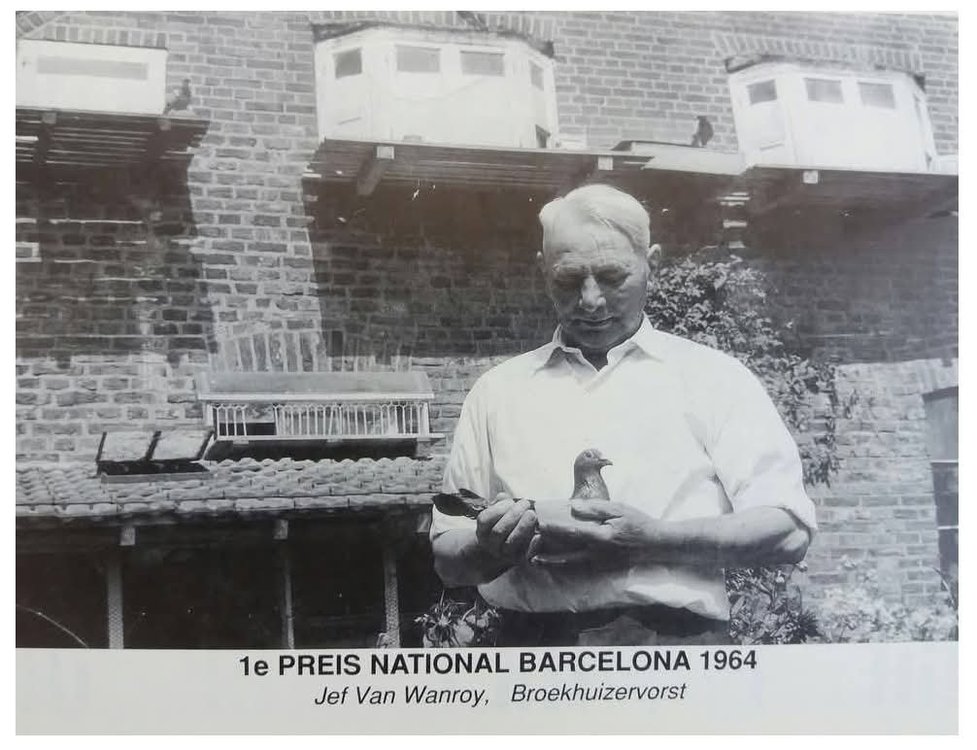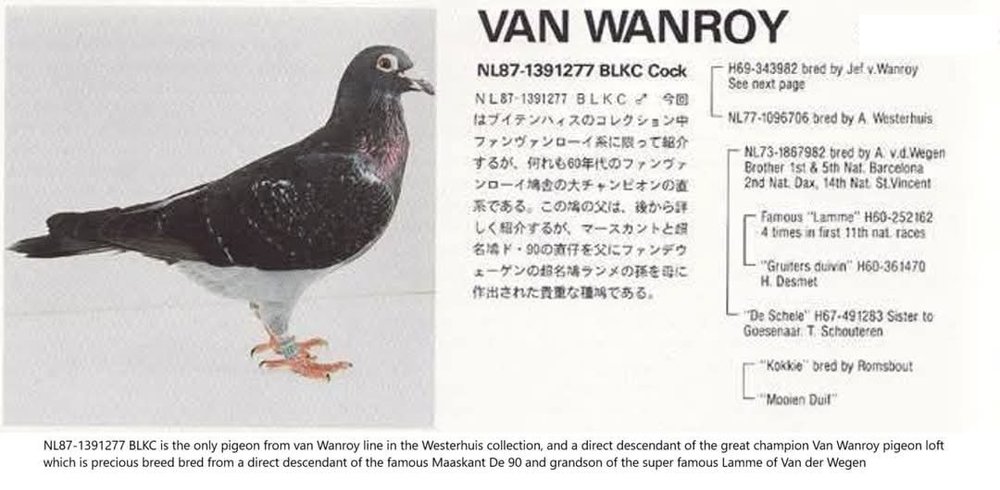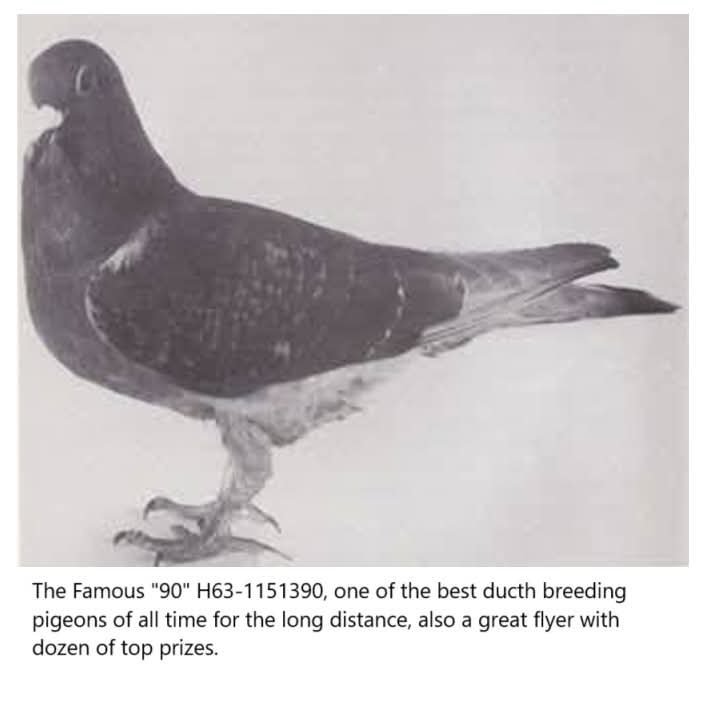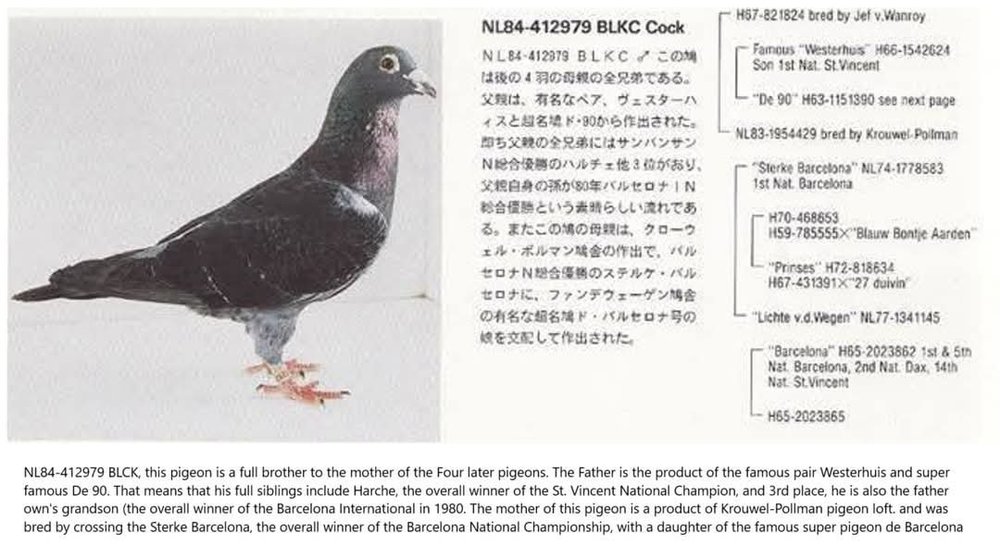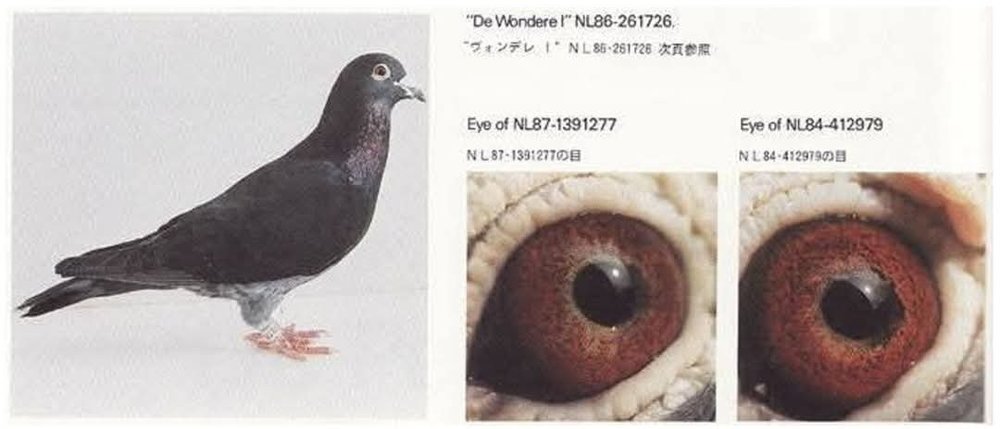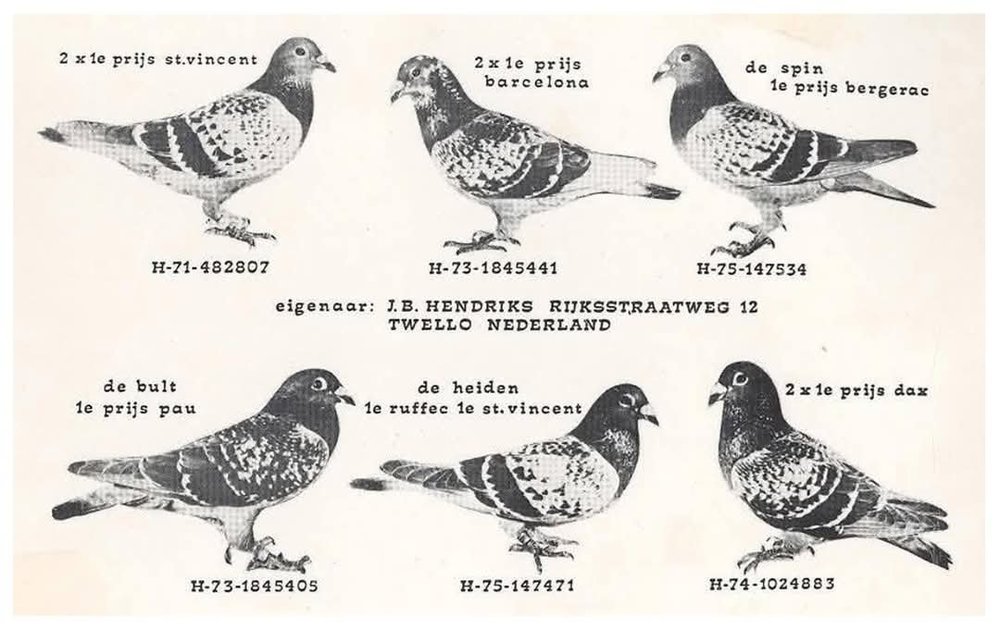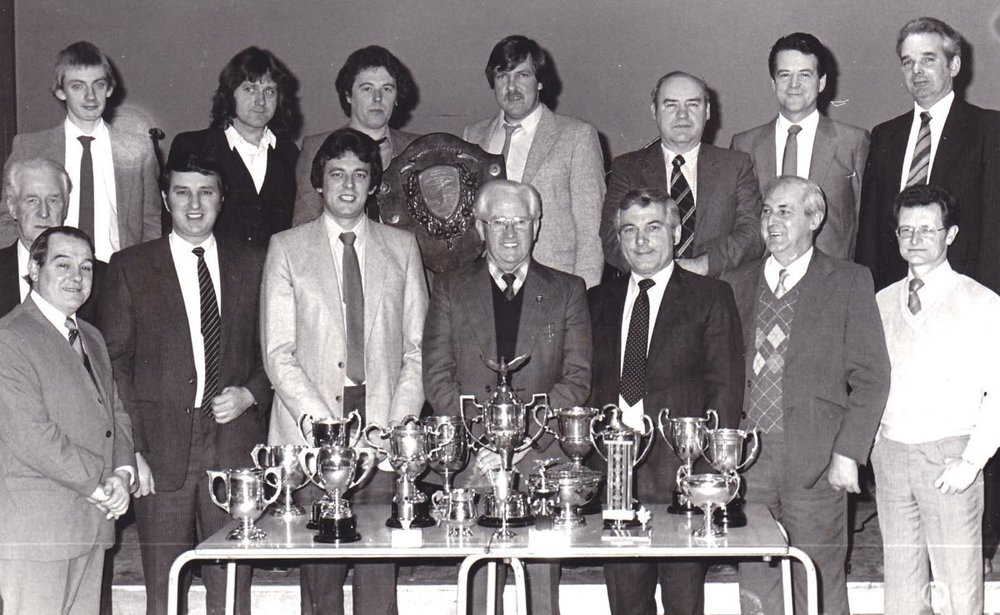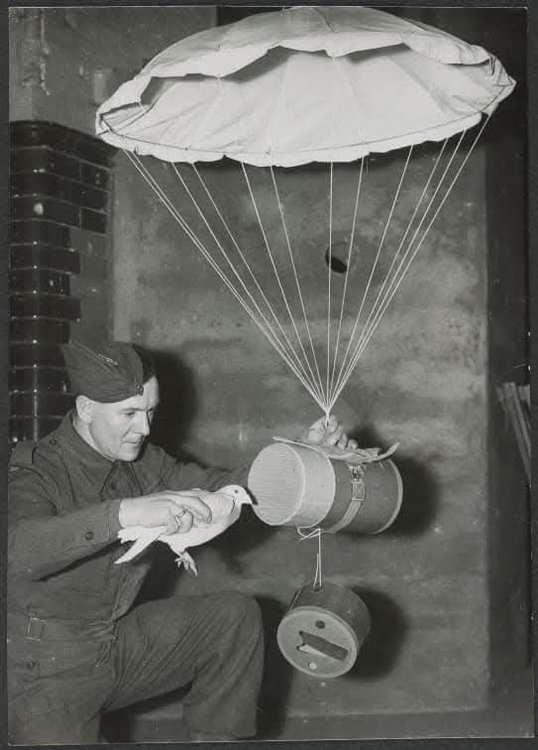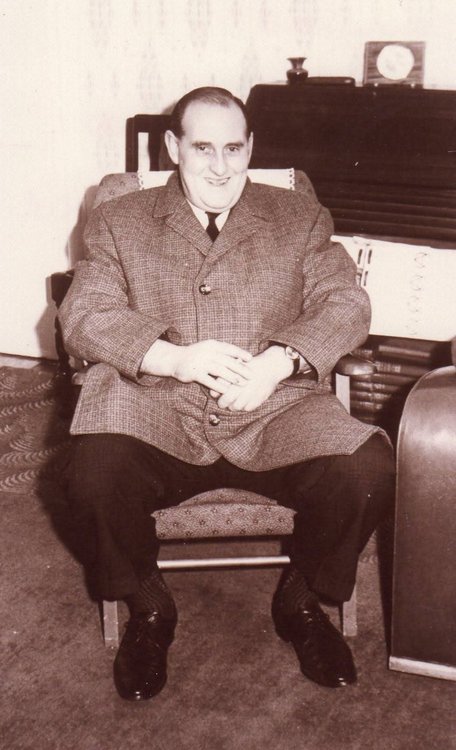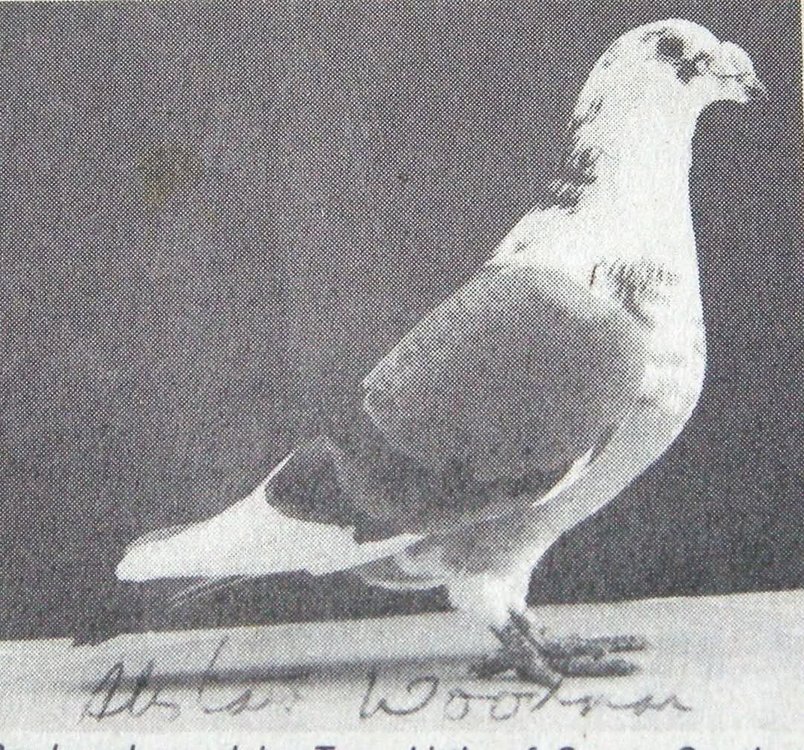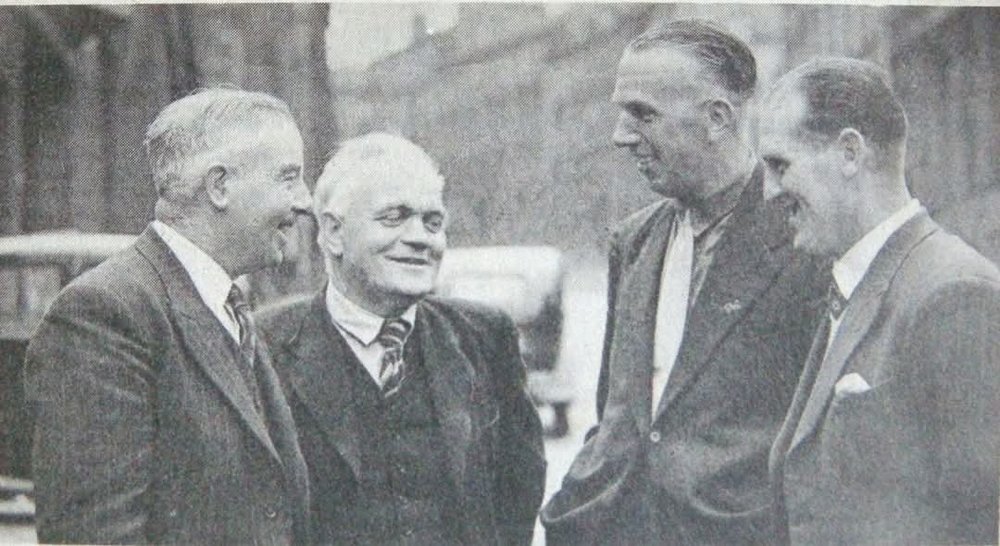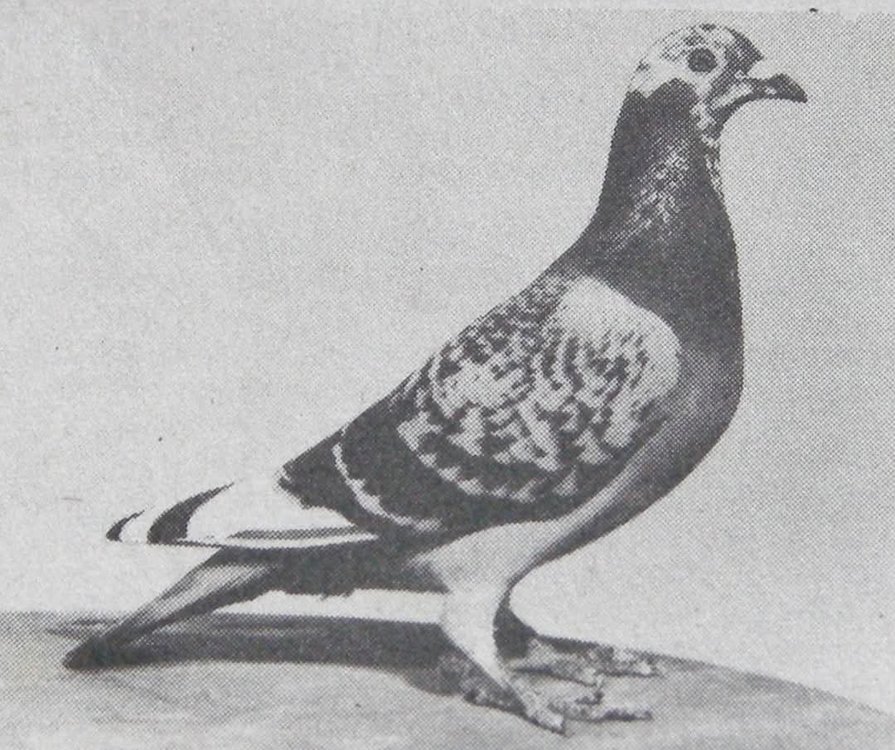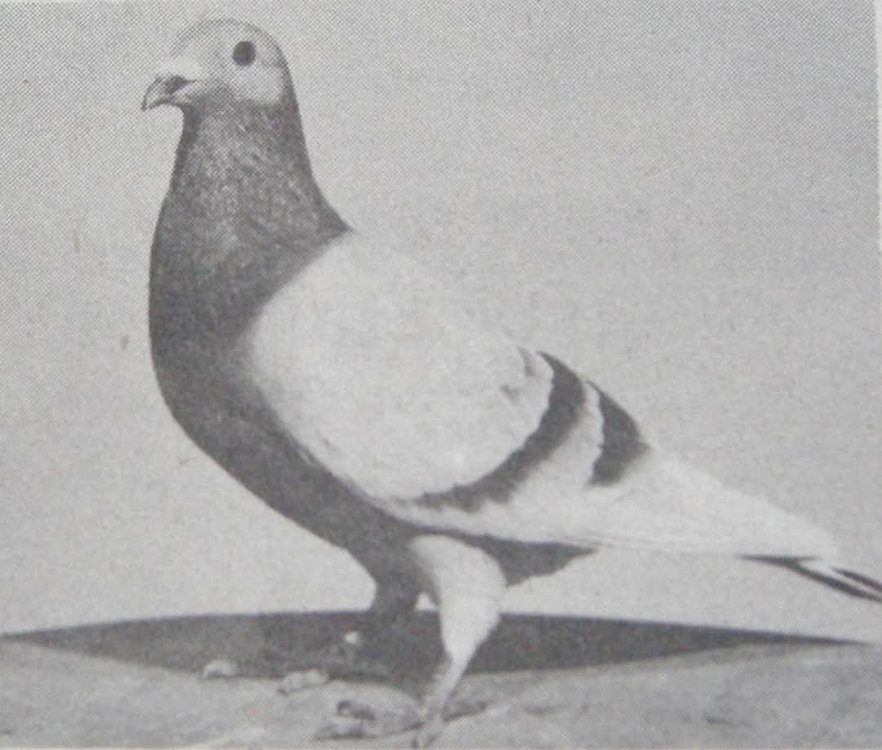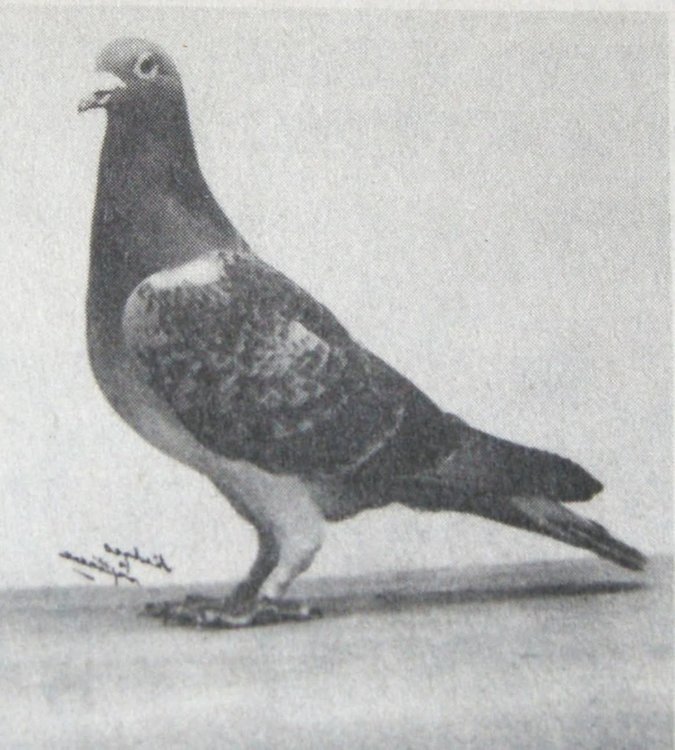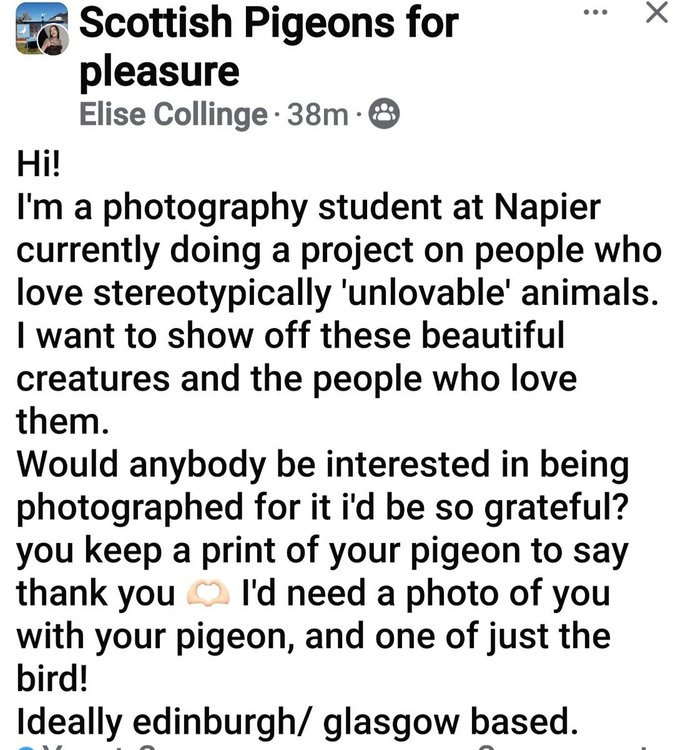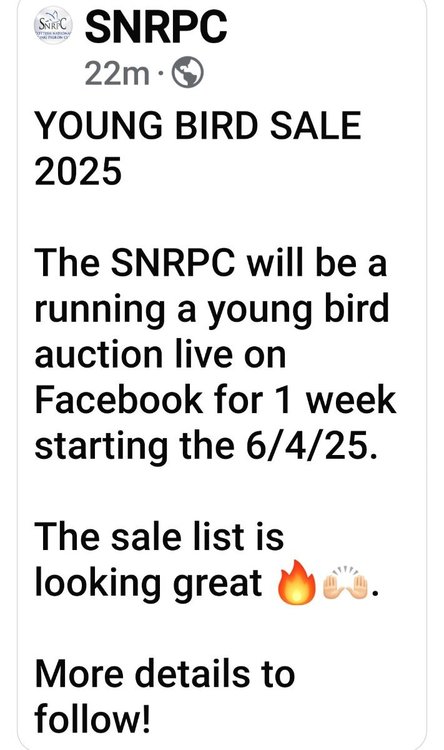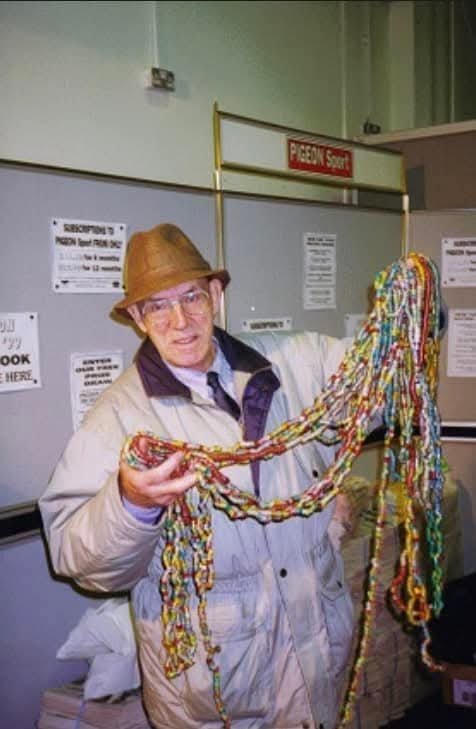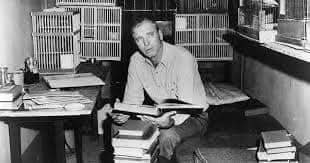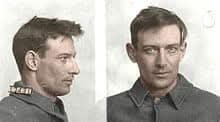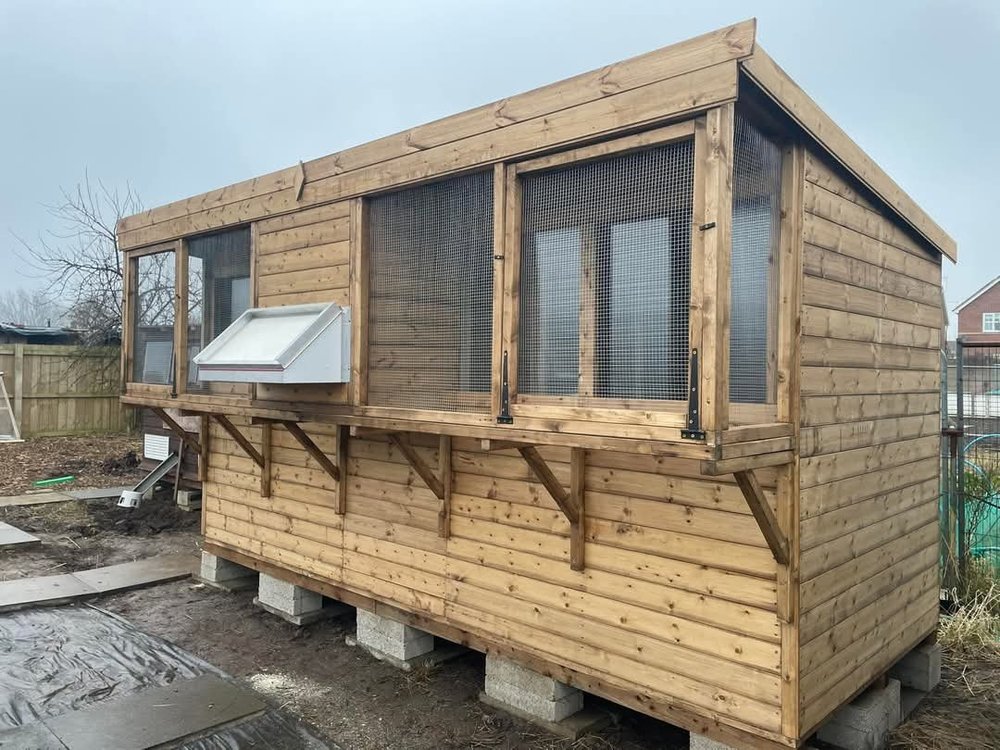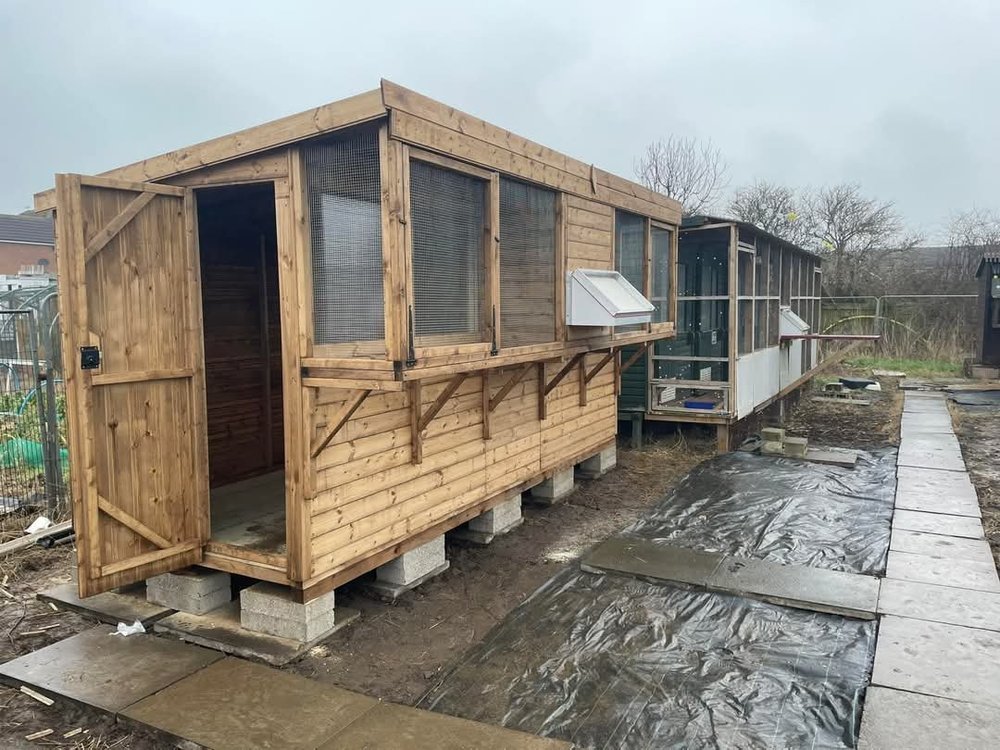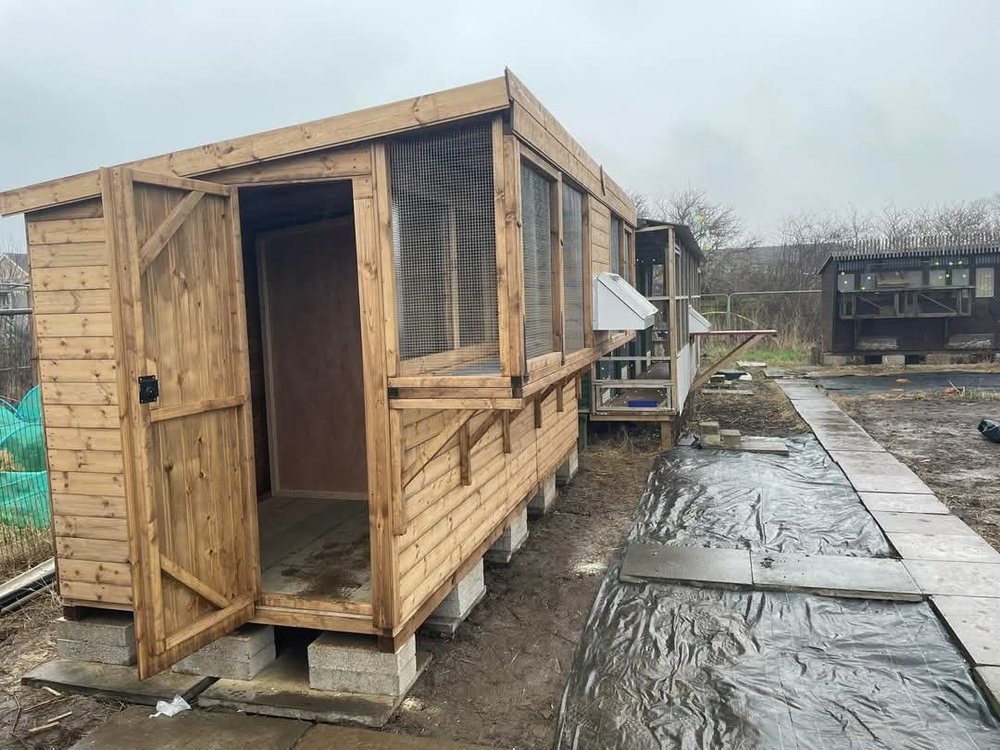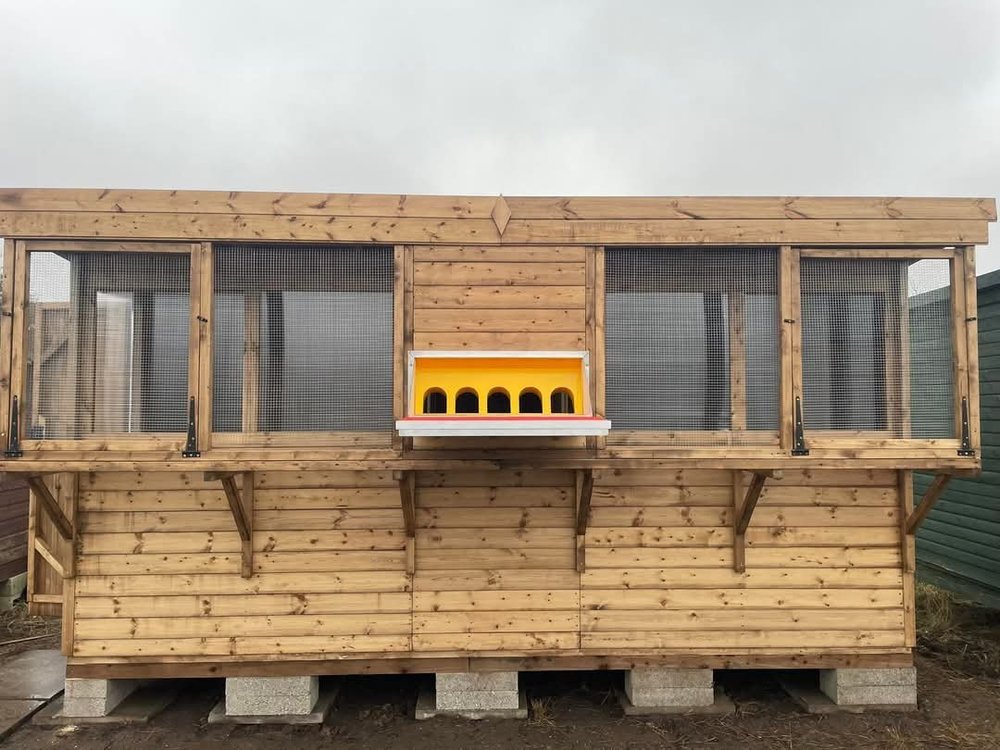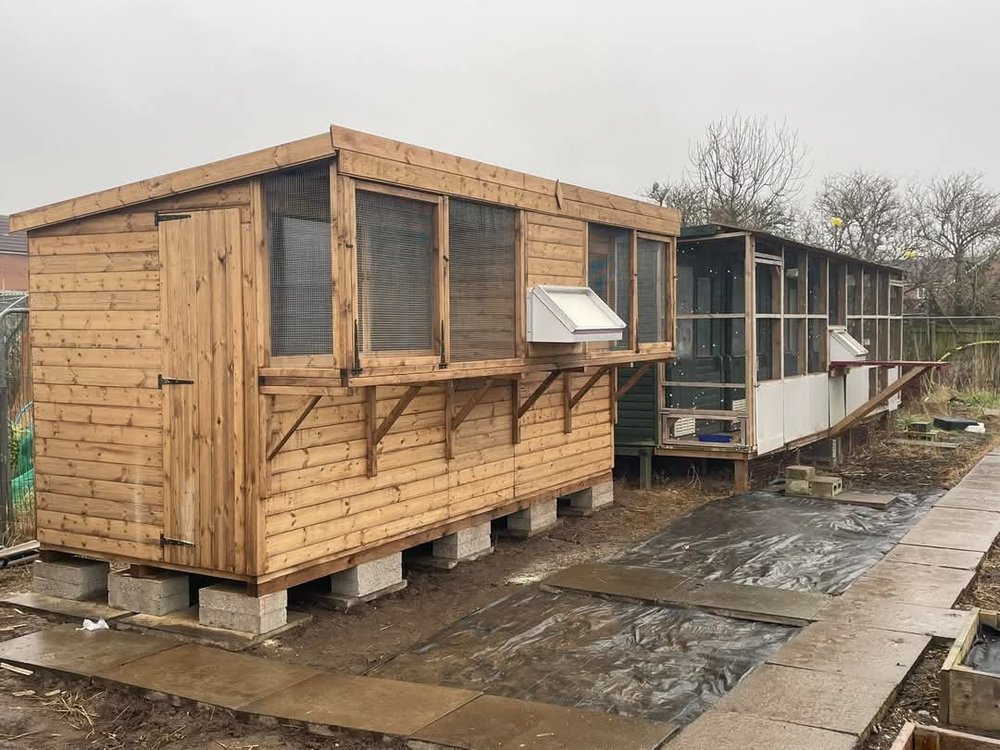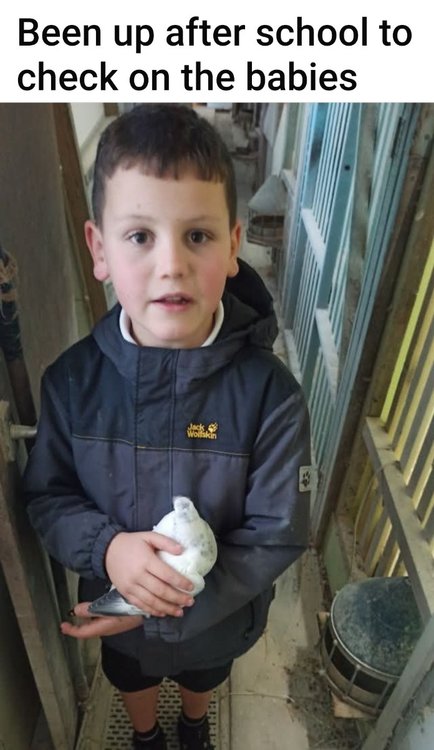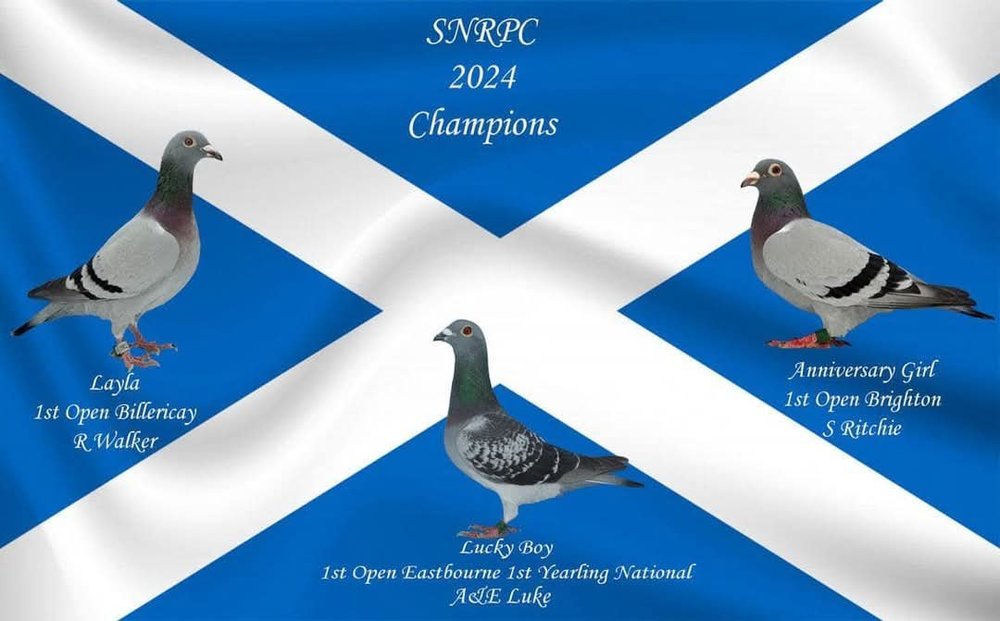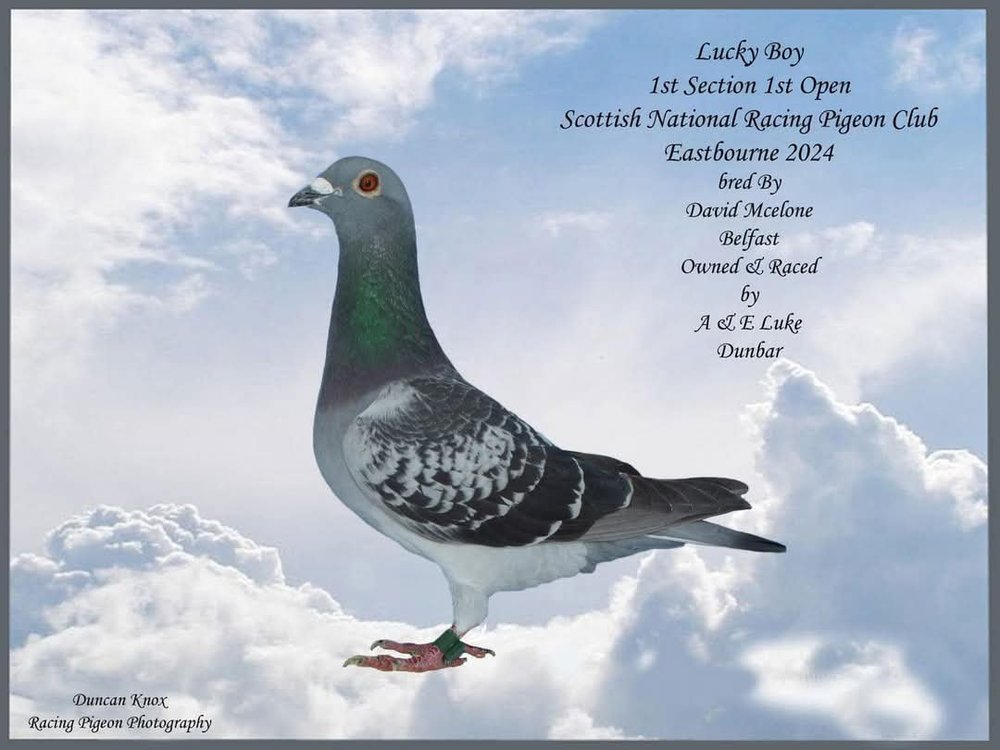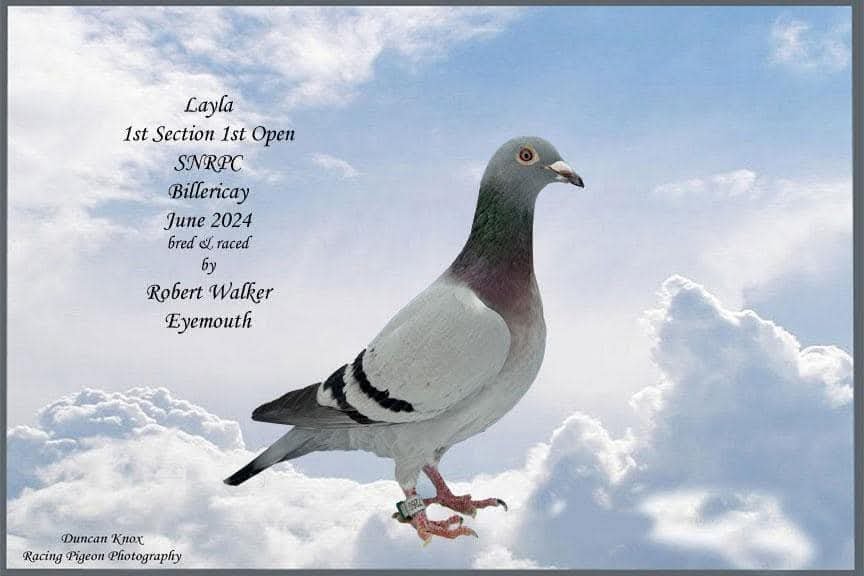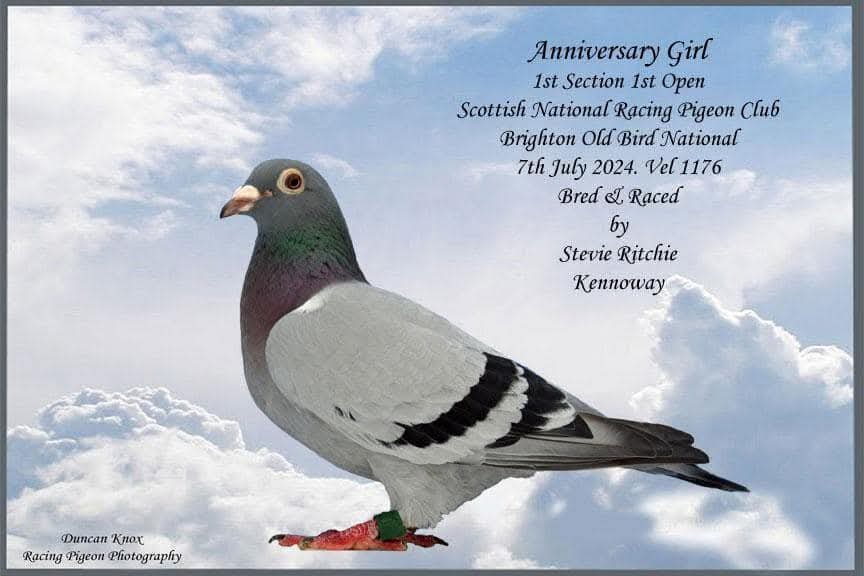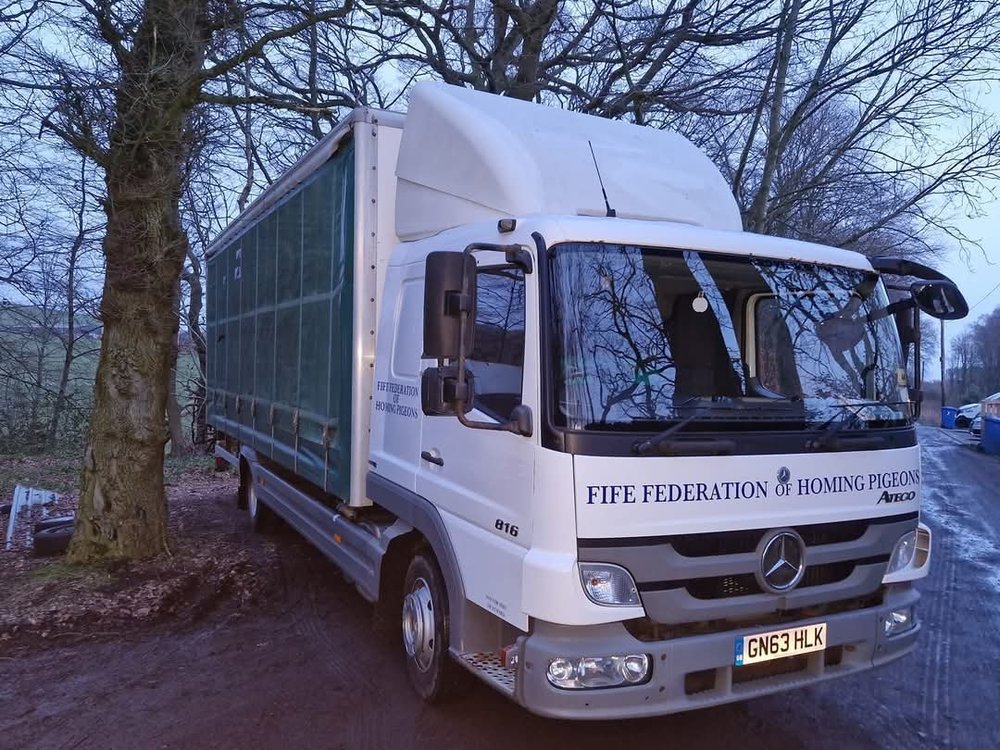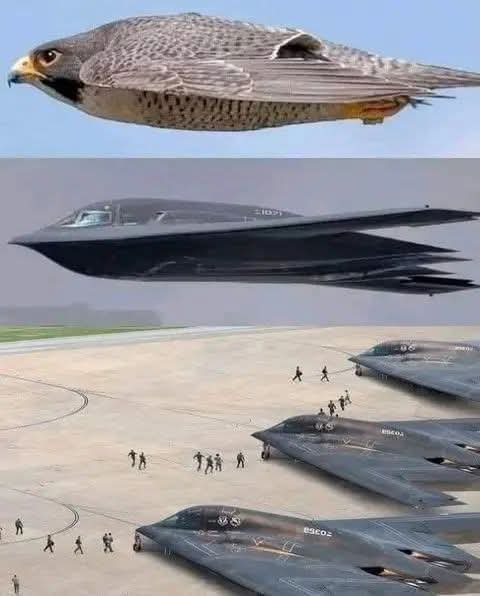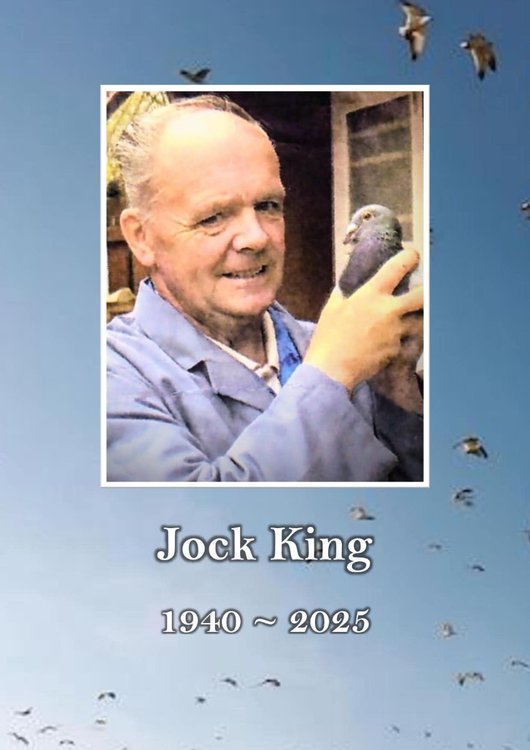-
Posts
35,920 -
Joined
-
Last visited
Content Type
Profiles
Forums
Events
Everything posted by sapper756
-
-
Bump
-
Thjeu Cox, a pigeon fancier from Stein, Netherlands, known for his exceptional achievements in extreme long-distance pigeon racing. Investment: First investment: A youngsters of Toon Schouteren from De Heen (a town in Zeeland) were offered for sale. Thjeu obtained the 415 from '82, which was a son of David x Keetje Tippel. Other purchase: From Huub Smeets, Jan Theelen, André Vanbruane, Piet Hermens, exchange pigeon to Jos Martens, Hubert & Riet Jongen from Kerkrade, Raf Luyckx (Belsele, BE), and Ko Van Dommelen. Here are some of his notable accomplishments: He won the PIPA ranking for the best extreme long-distance pigeon in the Netherlands with his pigeon "Kleine Barcelona". National and International Success: "Kleine Barcelona" achieved a 6th National Barcelona (4,504 pigeons) and an 8th National Narbonne (4,568 pigeons). Additionally, it secured an 11th International Barcelona (17,094 pigeons) and an 8th International Narbonne (10,421 pigeons). Long-Distance Champion: Thjeu Cox has been a top contender in long-distance races for many years. In 1995, he won a 1st National Pau, and in 2002, he won a first prize in the national marathon. Over the years, Thjeu Cox has won numerous top results, including being the 3rd National Marathon Champion in 2016 and winning the 1st National Marathon 8 nominated.
-
-
Bump
-
Jef Van Wanroy was a renowned pigeon breeder and racer from Broekhuizenvorst, Holland. Born in 1904, he became involved with pigeons during his teens and returned to the sport with serious intent in 1946. Van Wanroy specialized in long-distance races and achieved remarkable success, winning numerous national and international prizes. His pigeons, known for their endurance and performance, were highly sought after. Van Wanroy's legacy continued even after his death in 1971, with other fanciers like Anton Van Haaren and Jan Hendrix carrying on his work.
-
Leven Homing Society's annual presentation of prizes in 1985, held in the Mountfleurie Centre. Picture courtesy of the Fife Free Press Group, and taken by Bill Hill Photography, Pittenweem.
-
-
🔴 An Australian soldier carries a dove in a container To drop it by air over the occupied territories, World War II (with permission from Argos Newspaper Group)
-
As announced yesterday in the SNRPC annual auction will be held this year for the first time live on Facebook. The sale will run for 7 days from 6/4/25 A massive thanks to all the fanciers who have donated! 1. PETER KEOGH WINCHBURGH 2. BRIAN CHALMERS KENNOYWAY 3. T&G WEIR LINLITHGOW 4. JOHN HADFIELD BLACKBURN 5. F&W ROBERTSTON DANDERHALL 6. JIMMY MARK TRANENT 7. MARTYN BROWN BONESS 8. ROBERT WALKER EYEMOUTH 9. A ORR & SON BRIGHTONS 10. TAM MANGER BONESS 11. DANNY HENDERSON DUNDEE 12. C&C CAMERON ARBROATH 13. SCOT RUSSELL DENNY 14. KEN BUCHANNAN HAMILTON X2 15. D H OGILVIE STIRLING 16. AS THOMSON & SON PORT SETON 17. DUNCAN KNOX DUNBAR 18. DAVID MCBEATH AVONBRIDGE 19. NORMAN RENTON FOULDEN 20. P. W VIRTUE COCKBURNSPATH 21. A&E LUKE DUNBAR 22. MASKAME & CORDINER PETERHEAD 23. CAMMY HEEPS BONESS 24. MIKE PARKER SOUTH WALES 25. GEORDIE HARRIS DUNIPACE 26. RYAN HAY & FAMILY BANFF 27. LAWRENCE & CURRAN DUNDEE 28. GEACH BROS, MCKENNA & CHAPMAN HARTLEPOOL X2 29. ALASDAIR MACLEAN OBAN 30. BOB MCKIE BLACKHALL MILL 31. HENRY BORTHWICK WINCHBURGH 32. STEVIE FARRAGHER LIVERPOOL 33. BRIAN KELLY CHIRNSIDE 34. SCOTT MORRISON GRANGEMOUTH 35. GORDON MACKENZIE BROXBURN 36. KEVIN WHITHAM DUNBAR 37. IAN ROSS KIRKINTILLOCH 38. VIC COUPAR DENNYLOANHEAD 39. HBW DUMBARTON 40. RAB HAMILTON CAMPUS The sale will be shared on all different pigeon groups but bid will only be accepted under each lot on the official SNRPC page Phone bid will be accepted also to the SNRPC secretary David McArthur or you can private message the SNRPC Facebook page if you wish to remain anonymous. Many thanks! 🙏🏼
-
When I was a wee lad this guy was , and still is, a legend. Here's info from WP Wortley, written in his usual, detailed, way. Tom Little Tom Little was a really good fancier who resided in the village of Creca, which is located two miles North of Annan. Tom kept pigeons from schoolboy years and when 12 years old joined the original Hoddom Club obtaining six rings only to ring his modest team of youngsters. Tom joined the Forces in 1939 and was demobbed in 1946. In his absence on War duty his father continued to keep pigeons in a modest way and when Tom returned home and settled back into home life, he built a new loft and studiously considered from whom he should obtain stock. In an article that he wrote for one of the Stud Books he said “I looked through the pigeon journals for a few weeks and then my attention was drawn to the advertisement of Mr. Duncan Thomson from Muirend, Glasgow, who was giving up the sport owing to age. The pigeons offered were advertised as Logans and from what I now know of this family they certainly looked the part, being Dark Chequers and rather below medium size. I applied to Mr. Thomson for two pairs and in reply he asked me if I had been in the Forces during the War. When I wrote to him to say I was in the Commandos he sent me two selected pairs at half the advertised price and also an extra one as a gift”. Tom wrote to Duncan Thomson to enquire if he could obtain pedigrees for the new acquisitions and lo and behold a large box arrived loaded with prize tickets and a letter, which stated that his pedigree was the basket as could be seen from the prize tickets and when Tom had viewed them he had to return them to the sender. That was good enough for Tom. He had been friendly also pre-war with Tom Stodart from Linbridgeford, Waterbeck, Near Lockerbie who was the son of a farmer and had invested heavily in quality bloodlines. Shortly after Tom returned home his friend was regrettably killed in a road accident and following the accident, Tom Stodart’s mother invited him to take several of the pigeons and these and the stock obtained from Duncan Thomson formed the basis of his family. Tom never initially knew the breeding of the Stodart pigeons but after he penned an article for one of the Stud Books he received a letter from a fancier with several adverts that had been placed in the Fancy Press, which suggested that the Stodart pigeons were Logan based. I have indeed just looked at an advert included in the Squills Annual in 1941, which confirms that they were basically Logan with a Galway cross. Interestingly included in the advert is a photo of a Red Chequer cock named ‘Solway King’, which was a prolific winner and won the Fed. from Christchurch in 1940 with a velocity of 749ypm on a very difficult day. Post War Tom initially joined Gretna Club and actually won the first race he entered. He then competed in the Federation Channel event from Guernsey in 1949 and won. He told me that he was quietly optimistic that the team of pigeons that he and his father were assembling was showing such promise he believed they could compete at the highest level. In 1951 from Rennes there were only five arrivals on the night, Jack McKay from Annan won the race with ‘Festival Triumph’ and John Kirkpatrick was 2nd with ‘Galabank King’. Tom Little timed one of the five arrivals and was 5th. Move forward to 1952 with John Kirkpatrick being 1st and 2nd Open from Nantes with ‘Galabank Prince’ and ‘Galabank Duke’. On that occasion Tom was again hard on his heels being 3rd Section 7th Open. In 1953 Tom was 10th and 12th Open from Nantes, this incidentally being the race from which John Kirkpatrick was 3rd Open with ‘Galabank Queen’. Tom told me that having successfully re-entered the Fancy, he was aware that other fanciers were taking note and indeed one sunny Spring day he had a visit from John Kirkpatrick and George Jackson who had walked to Creca from Annan. They looked at the pigeons but whilst they were at the loft didn’t make any specific comment. Following their visit, however, Tom met John Kirkpatrick on the street who told him that he thought Tom had a marvellous team of hens to which Tom responded that he recognised that John Kirkpatrick had an equally good team of cocks. John Kirkpatrick suggested that they do a swap and said he would like a small yearling, which he described as “that awfully wee hen” and by indication of his hands inferred that the pigeon was infinitesimal. Tom thought to himself “the pigeon doesn’t look extra special to me but if Johnny wants it there must be something about it that I can’t see”. He therefore declined the swap and his judgement proved to be correct as the pigeon ‘3813’ developed into be one of Tom’s best ever pigeons scoring three times from Rennes. A friendship was nevertheless formed with John Kirkpatrick and as the months passed he received several birds from him including a direct son of ‘Galabank Supreme’ and the nest-mate of what became known as ‘Galabank Producer’. When John Kirkpatrick died he was gifted two further birds by Mrs. Kirkpatrick. The Kirkpatrick introductions didn’t just blend with the original Logan family, they ignited it. He won the Federation on numerous occasions including the Solway Federation channel event, which he won several times. He won the South of Scotland Channel Club channel race twice and won also the Channel Club Yearling Race and Young Bird Race. In the days of intense competition when racing with the S.N.F.C., Tom gained the following Open positions. He was 2nd, 3rd, 4th, 5th, 6th, 8th, 9th, 10th twice, 11th, and 12th from Rennes, 2nd, 3rd, 4th, 5th, 8th, 9th 10th 11th and 12th from Nantes, 2nd, 7th, 8th, 9th, 10th, 11th and 12th Falaise and 1st Open Avranches. He scored on numerous occasions from the Y.B. National with his best position being 3rd Open. I elaborate below on two of the performances. In 1966 three channel races were flown; the first from Rennes, which was won by Jim and John Nash from Croy with Blue hen ‘Daphne’s Delight’. The second race was flown from Nantes that was won by Jimmy Hamilton from Kennoway with Red Pied Hen ‘Nan’s Pride’. The third race was flown from Avranches with a convoy of 2,937 birds being liberated at 5.45am into a light North East wind. 21 birds only made home on the day of liberation with Tom Little heading the result with Chequer Pied hen ‘Creca Pride’ that was timed at 7.32pm and headed the result by 36ypm with a velocity of 946ypm. The following year the S.N.F.C. Blue Riband event was flown from Rennes with a convoy of 5,701 birds being liberated at 5.45am into a South West wind, which turned to S.E. en-route. Robbie Hope from Eastriggs was 1st Open with a velocity of 1645ypm, followed by Tom Little on 1606ypm. Tom’s 2nd Open Rennes was Mealy Hen ‘Angela’, which like the Avranches winner contained Kirkpatrick x Logan bloodlines. Tom’s father had really bad eye sight but notwithstanding his disability he assisted Tom at the loft. When they were 2nd Open Falaise Tom was in the house and his father was working in the garden. His father ‘heard’ a pigeon and went to the house to alert Tom and the remainder of the story is history. As the years moved forward other lines were brought into the loft including examples of Ewart Warwick’s family and a son of Rob and Elliot Borthwick’s great pigeon ‘Happy’. Amongst the performance pigeons to emerge in the loft, was Dark Chequer hen ‘3440’, which was 5th, 7th, 12th and 42nd Open Nantes. Such was the quality of the hen that he had it photographed with the photo being published in the Gazette. The following year he sent a basketful of pigeons to Preston on the train to be tossed in preparation for the Nationals and the hen failed to return. Tom always wondered if it had been removed from the basket in the train. It should be noted also that Tom bred a number of top quality pigeons for other fanciers. Consider, for example that he bred the Dam of Mr. and Mrs. Horsburgh’s ‘Fechan Lass’ that was 1st and 3rd Open S.N.F.C. Rennes. The Dam was a beautiful pigeon with a fabulous eye and won the Eye Sign Class in the Solway Federation Show on two occasions. Hind and Crombie’s great hen ‘Shawhill Faithful’ was bred from a Kirkpatrick cock when coupled to a Tom Little Logan hen. The Logan hen was only one day old when Jim Crombie and George Hind received it from Tom. They brought it home from Creca in a handkerchief and reared it under a pair of their own pigeons. She proved to be a very able performer and flew the channel four times, always on the day of liberation and gained 13th Solway Fed Dol and 112th Open S.N.F.C. Rennes. At stock she left a number of winners including ‘Shawhill Faithful’, which flew the channel five times with her favourite race point being Rennes. She scored from Rennes on four occasions with her best performance being achieved in 1966, when she was 1st Section 2nd Open. In 1978 Jim Crombie was 1st Open Nantes with Dark Hen ‘Shawhill Elizabeth’ when there were only two arrivals on the night, with the National winner being on the wing from 15 Hours 40 Minutes. The second pigeon on the night was indeed timed by Tom Little. The following year ‘Shawhill Elizabeth’ went back to Nantes and was again timed on the night to be 9th Section 13th Open. ‘Shawhill Elizabeth’, incidentally, was home bred and contained the lines of the same ‘Shawhill Faithful’, going back again to the Logan lines of Tom Little. Tom also bred the Sire of Tony Hodges pigeon that was 1st and 2nd Palamos, the Dam of the bird that won the Y.B. National for Tom Laidlaw from Jedburgh and the Dam also of Rob and Elliot Borthwick’s Y.B. National winner. When John Hodgson moved to live in Annan in 1976 he was gifted a Dark Chequer Cock by Tom Little, which won right out to Nantes and at stock left a number of winners. I could go on and on and quote these as examples …. I should mention that when Brydekirk Club was formed in 1949, Tom was one of the founder members and remained a member until his passing in 1985. It should be noted also that having previously moved the pigeons by Rail, the Solway Federation broke with tradition in 1966 and began transporting the birds by road, with the Solway and East Cumberland Federation pigeons being conveyed together in a single transporter. The transporter was owned by local haulage contractor, Wm. Halliday & Sons, the arrangement having been negotiated and agreed between friends Tom Little and Tom Halliday, who was the proprietor of the haulage company. We publish several photos with this article. (a) Chequer Pied hen ‘Creca Pride’ that was 1st Open S.N.F.C. Avranches 1966; (b) Mealy Hen ‘Angela’ that was 2ND Open Rennes 1967; (c) Dark Chequer hen ‘811’, which was 5th Open Rennes 1951, 35th Open Rennes 1952, 122nd Open Rennes 1953, 17th Open Rennes 1954 and 64th Open Rennes 1955; (d) Blue Chequer hen ‘3813’ that was 1st Solway Fed. Christchurch as a yearling, 16th Section 27th Open Rennes 1954, 4th Section 25th Open Rennes 1955 and 3rd Section 53rd Open Rennes 1955; (e) The Blue Pied cock Kirkpatrick cock photographed won 5 – 1st in the Club, was 1st and 2nd Fed. Inland and 8th Fed. from Avranches. From one channel crossing he failed to return and was reported in Altenburg, North Germany. He escaped from the loft in Germany and homed single up, a straight line distance of 707 miles. (f) We also include a group photo that includes John Kirkpatrick, George Jackson and Tom Little (right). The photo was taken in Glasgow when the friends were attending an S.N.F.C. Meeting. ( g) The final photo shows Tom Little at home. I trust that our readers have found this overview of interest as we have reflected on the ability and achievements of Tom Little from Creca.
-
-
Copied from Facebook Aberdeen Federation are looking for a driver for this 2025 season, from April to early September. Friday is basket day, from 5pm onwards, there are 3 club pick up points in Aberdeen and Saturday will be racing day weather permitting. Driver needs a full, clean driving license, if interested, please contact Alan Williamson on 07979 718869.
-
Grasshopper Chronicles: The Birdman Of Alcatraz In the world of pigeon racing and bird keeping, knowledge is everything. A fancier who understands his birds, their health, and their environment will always have an edge over those who rely on luck alone. While modern pigeon medicine has come a long way, the foundations of avian health management were built upon years of careful observation and trial and error. Few individuals embody this relentless pursuit of understanding better than Robert Stroud, better known as the Birdman of Alcatraz. Stroud’s story is an extraordinary one. Despite spending over half a century behind bars, he became one of the most knowledgeable avian researchers of his time. His work, carried out under the most restrictive conditions, led to breakthroughs in understanding bird diseases and their treatments. With no formal education in veterinary medicine, no access to modern laboratories, and limited resources, he managed to diagnose, treat, and even cure illnesses that were devastating to captive birds. His meticulous approach to bird health offers lessons that remain relevant today, not just for those keeping songbirds but also for pigeon fanciers striving to maintain peak health in their lofts. Stroud’s journey into bird keeping began in the most unlikely of places—inside the walls of Leavenworth Penitentiary. It started with a single injured sparrow that he nursed back to health. This small act of kindness ignited a deep fascination, leading him to acquire and breed canaries within his cell. What started as a simple hobby soon turned into a full-scale scientific study. Despite being confined to a tiny space, Stroud observed everything—how his birds behaved, how they responded to different diets, and most importantly, how diseases affected them. Without access to textbooks or professional guidance, he relied on his own keen eye and relentless curiosity. He noted symptoms, identified patterns, and experimented with remedies, all while keeping meticulous records. Over time, he built a deep understanding of avian illnesses and, in doing so, made groundbreaking discoveries in the field of bird medicine. One of Stroud’s greatest contributions was in recognising and categorising avian diseases. He studied bacterial infections, respiratory ailments, digestive disorders, and nutritional deficiencies—many of which are just as relevant to pigeons as they are to canaries. His work was eventually compiled into Diseases of Canaries, a book that is still referenced today. Among the many diseases he encountered, one of the most significant was haemorrhagic septicaemia, a deadly bacterial infection that caused internal bleeding and rapid death. Stroud discovered that disinfecting drinking water with potassium permanganate reduced bacterial spread, a method that is still used today in various forms of avian care. He also experimented with silver nitrate as an antiseptic for treating wounds and infections. Another major challenge he tackled was coccidiosis. Stroud quickly realised that keeping cages scrupulously clean was crucial in preventing reinfection, as the disease spreads through contaminated droppings. Later, when sulpha-based drugs became available, he tested them extensively and found them to be highly effective. Even today, pigeon fanciers battling coccidiosis use sulpha-based treatments, proving that his methods were far ahead of their time. Stroud also studied respiratory infections, a common issue in pigeons and other birds, especially in poorly ventilated environments. He noted that damp conditions led to breathing problems and sought ways to alleviate them. One of his solutions was the use of eucalyptus and menthol vapours to clear airways—an old remedy that has stood the test of time. He also recognised the benefits of cod liver oil, understanding that its rich vitamin content supported immune function and overall health. Perhaps one of his most important discoveries was the role of nutrition in disease prevention. Stroud believed that many illnesses stemmed not from infection, but from poor diet. He found that brewer’s yeast was an excellent source of B vitamins, essential for maintaining energy and feather condition. He also recommended adding bone meal and crushed eggshells to diets to ensure adequate calcium intake. Grit and charcoal were also part of his regime, aiding digestion and preventing crop-related issues. One of Stroud’s great admirers for avian health was the much-beloved scribe Bilco. Bilco studied Stroud for many years, drawing from his work to develop his own understanding of bird health. His passion for Stroud’s findings led him to create a product called Xerex, which proved to be an outstanding remedy for young bird sickness. Unfortunately, this great product disappeared from the market when Bilco passed, and when the company he outsourced its production to, Dazer International, folded. Those who used Xerex will remember its effectiveness, and it remains a much-missed tool in the fight against young bird sickness. Being someone who always wants to learn, I have spent time researching and experimenting, and I believe I may have worked out the formula which on the ingredients only ever said ‘Mixed Carbonates’. In true Stroud fashion, I will observe and test it on my own birds, and a few close friends have agreed to try it and we will study its effects when—like every year—young bird sickness inevitably strikes. No doubt if my findings are correct, I will discuss my observations with the fancy. One of my biggest bugbears, although it has no influence on performance, is when you look at your own or somebody else’s young birds, pull out the wing, and see the slightest of frets on the first flight. This appears in at least 95% of young birds I have seen over the years. The 5% where it doesn’t appear? When I ask their owners, the response is almost always the same—they are summer-bred. This instantly makes me think that cold temperatures play a role in this defect. Could it be that the harsh conditions during feather growth in the winter months cause a disruption in the structure of the feather? It’s a question that has fascinated me for years. Now, this wasn’t a Stroud experiment, but an adaptation of an article I wrote many years ago on my good friends Micky and Michael Connolly. In the nest of their young birds, every other day, they would give a brewer’s yeast tablet and a cod liver oil tablet. I’ve taken this idea and experimented with it myself, but with one key difference—I’ve been giving both supplements once a day, every day, throughout the winter. The results so far? Every young bird I’ve produced using this method is completely free of that dreaded fret line in the first flight. Both brewer’s yeast and cod liver oil were favourites of Stroud. Brewer’s yeast for its high B-vitamin content, supporting feather growth and metabolism. Cod liver oil for its omega-3 fatty acids and vitamin D, crucial for bone and feather strength. Have I cracked the mystery that’s bugged me for years? I won’t commit to saying definitely, but I will continue observing, continue experimenting, and continue refining my approach. In true Stroud fashion, the answers are there to be found—we just need the patience and curiosity to look for them. Master Po once said "A man who listens, learns. A man who observes, understands. But a man who acts upon his understanding, that man will never be without knowledge." Stroud’s legacy is a testament to this wisdom. Though he was trapped behind bars, his mind soared far beyond his confinement. He proved that with patience, curiosity, and determination, we can unlock the secrets of bird health—not by blindly following trends, but by trusting in what we see with our own eyes. And in that, there is a lesson for us all.
-
-
-
-
-
Copied from Facebook Well that's our lorry ready for the season,old girl has been parked up since the end of last season,checked her over yesterday needed a couple of bulbs and a new tyre fitted(old tyre was good but out of date), gave it a wash and put her in for it's annual mot test today,straight pass with no advisorys,it just shows that if you look after the lorry through the season you don't get a big bill at the start of the year
-
The peregrine falcon, the fastest creature on Earth, swoops down on its prey at 400 km/h without being affected by the enormous air pressure. The secret? A small bone in its nose called the "tubercles", which slows the airflow and protects its respiratory system. This engineering marvel inspired aeronautical engineers, and the design of modern engines was inspired by it, which increased the speed of aircraft and increased their stability. Even the American B-2 bomber, worth a billion dollars, was inspired by the aerodynamics of the peregrine falcon during an attack. And in that is a sign for those who ponder, Glory be to Him who perfected everything, and placed in a small creature a secret that led humanity to tremendous development.
-
Please share on behalf of the family. It is with great sadness and broken hearts, the family are announcing the passing away of a very much loved man, Mr John King, known to most as Jock or Jocky. Jock, fell peacefully into eternal sleep, at Raith Manor Care Home, on Friday, 7th February, 2025, aged 84 years. Jock was the cherished husband to Mary, a much loved dad to Elaine, John, Alan, a beloved father in law to Murray and Wendy, a devoted grandad to Lewis, Amanda, Rebecca, Graeme, Amy, Jenny, Rhianna, Shannon, and the late Scott, an adored great-grandad to Erin and Cillian, a loving uncle to Margaret-Ann, Jim and William, and good friend to so many. Jock will be sorely missed by all who knew him. Funeral Service will be held on Monday, 24th February, at 3.45 p.m., at Kirkcaldy Crematorium, to which all family and friends are respectfully invited. Family Flowers only please but donations may be made at the crematorium for Dementia UK. The family would also like to invite you all back to Dunnikier Golf Club, after the service, for some light refreshments and to share fond memories of Jock. www.ianjohnstonfuneraldirectors.co.uk






